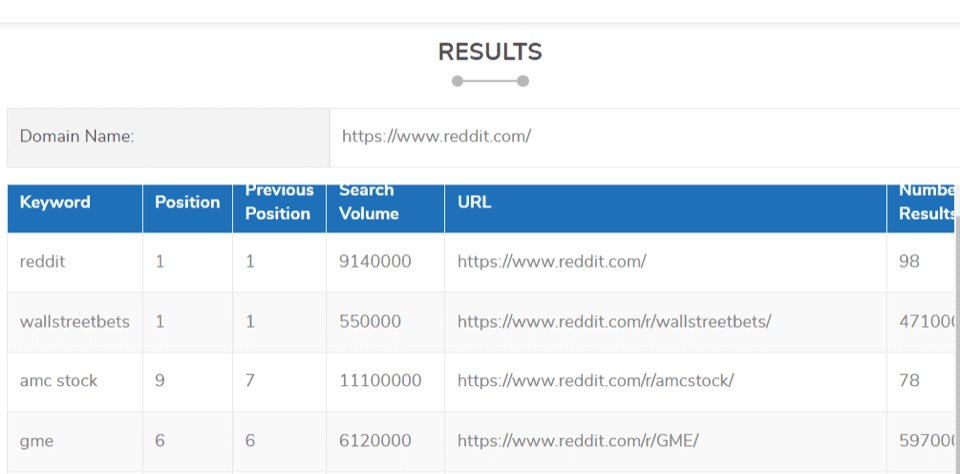A meta description should be written with SEO in mind and encourage searchers to click through. Here are the most common mistakes you can avoid to write the perfect meta description.
Do Meta Descriptions Still Matter?
When writing well-researched articles optimized for multiple keywords, marketers tend to pass over the value of an optimized meta description, treating character limits as a hassle. Even if meta descriptions don’t have a direct bearing on Google rankings, they’re still going to be the first impression that a user has of your brand along with the title tag.
Avoiding Rewrites
A recent analysis of meta description SEO trends revealed that over 70% of meta descriptions get rewritten by Google’s software. The reasons for this are debatable, but the consensus is that Google does this to improve search rankings for lower-ranked pages, particularly on the first page of results. If your meta description is going to be rewritten anyway, should you even bother to write one?
The key here is to realize that it’s always better to have an SEO-friendly meta description that accurately reflects the contents of your pages rather than rely on an automated system. Marketers can potentially avoid a rewrite by taking a focused approach to writing descriptions. This includes best practices like keeping them within the character limit of 150-160 characters and conveying the most relevant information and keywords in the first line of the description.
Providing Value
There’s a long-standing myth that new features like Natural Language Processing are making age-old SEO practices and character limits pointless for meta descriptions. While it’s true that Google has incorporated cutting-edge automated features into their algorithm, meta descriptions remain as relevant as ever. The algorithm uses language processing to determine the intent of the searcher, and the keywords in your description help the engine point users to your website.
#1: Forgetting to Add Keywords
With over a billion users every month, the amount of traffic Google receives results in millions of different search strings. Keywords essentially represent different words or phrases that commonly pop up across multiple queries. Search engines will look for these keywords and match them with different websites, eventually ranking them in the order of relevance to the user.

That’s why the very purpose of SEO revolves around the effective use of keywords, even in meta descriptions. A great meta description will obey character limits and inform the reader about the website’s content, but the best meta descriptions will do all that and also incorporate keywords organically.
The other end of this spectrum involves overusing keywords. In a bid to game the system by exploiting keywords, marketers might be tempted to use all the irrelevant high-ranking terms. Not only will this not get you any results, but it might even have the opposite effect. Make sure you’re always using keywords that are related to the content on the web page and using them just once or twice – where natural – is more than sufficient. The quality of your meta descriptions should never suffer for the sake of SEO, as valuable as it is.
#2: Writing Generic Descriptions

Most titles and meta descriptions on Google end up sounding the same for the sake of staying faithful to character limits and maximizing keyword usage. One of the worst things you could do to your website in terms of generating clicks is to write a boring or vague description. There are going to be thousands of websites that offer software or shoes, but the focus should be on what yours does differently from the rest.
The average user only reads approximately 20% of the content on a page before moving on. Your meta description is part of that precious minority that does get read – making it all the more valuable. Limited by characters and attention spans, your meta description should embody the unique style of your brand as well as tried and tested SEO practices.
Some great ideas for writing interesting meta descriptions include:
- Asking Questions: The foremost purpose of your description should be to answer your reader’s questions, but there’s no harm in making them curious by posing a question of your own. Inform the reader that your page is the best place for them to find what they’re looking for, and reel them in with a sly question at the end.
This is tricky to pull off, especially considering the limited number of characters you have to work with for your meta descriptions. You’ll also have to make sure you don’t overdo it with the questions, as it’s very easy to go from sounding knowledgeable to confused. - Be specific: When in doubt, be specific. If you’re working on a category page for men’s shoes, your meta description shouldn’t be about shoes in general. The more specific your meta descriptions are, the easier it’ll be to follow SEO practices and improve the overall quality of traffic your website receives.
#3: Not Answering Questions
Most people that use search engines are looking for answers to something. The meta description is your opportunity to capitalize on this fact and use it to convert readers. Design your descriptions to be detailed enough to offer precise answers to specific questions while generating curiosity through compelling copy.
Finding out what searchers are looking for involves both keyword research as well as a fair bit of creativity. Once you’ve got your keywords in order, think from a searcher’s perspective and craft your descriptions around crucial questions like ‘What is the page about?’ and ‘What is this site offering them?’.
#4: Not Following Character Limits
Your priority for any copy should always be quality. That said, character counts matter when it comes to search engines, and meta descriptions that obey character limits have an advantage over those that don’t. While there’s no magic number prescribed by the SEO algorithms that guarantee high search engine rankings, Google does recommend a count of 150-160 characters for your meta descriptions.

It’s worth noting that the Google algorithm is always evolving, and marketers can only guess how certain aspects of it work. When you’re working on a set of meta descriptions, make sure you stay updated on any new updates to the algorithm. Google announces changes to its algorithm from time to time, and staying informed can save you the hassle of having to go back and re-work your descriptions.
Character limits also vary from device to device. For example, the length of the description that searchers see on a desktop is generally about 158 characters, whereas for mobile this goes down to 120 characters. Even this metric isn’t static, and what gets shown to users can vary depending on factors like your current search engine ranking.
#5: Leaving Out the Call To Action

The meta description is a lot more than just an HTML tag that communicates with search engines. It’s also a vehicle for effective sales copy – an opportunity to turn readers into visitors. Any sales copy worth its name will almost always include a great Call To Action, or CTA.
Once you’ve got a great meta description that checks all the SEO boxes, remember to bring it all together with a great CTA at the end. Some popular examples of CTAs include ‘Try now’ or ‘Get it for free’. There’s a lot of overlap when it comes to these, and there’s no harm in getting creative to stand out from the competition. You can even incorporate a CTA at the beginning with words like ‘Discover’ or phrases like ‘Find out’.
#6: Not Refining Your Language
Language is everything when your goal is to create copy that converts. Meta descriptions that closely follow character limits will still not convert if the tone doesn’t appeal to the reader.
A common mistake to look out for is when marketers make descriptions that are too formal. Clinically written meta descriptions that closely mimic the contents of the page and chase SEO value will rarely convert. Instead, your sights should be set on creating copy that feels inviting and is readable, preferably written in everyday language rather than industry jargon.
Searchers lose interest very quickly with thousands of websites to choose from, and crisp sentences are far more effective at holding their attention. This also gives you more room to work with considering you’ll have tight character limits to stick to. Eliminate the fluff, get to the point, and help the reader out.
#7: Using Duplicates
Writing a set of descriptions for an organization can be an arduous process. Besides sticking to strict character limits, writers are faced with hundreds of different products, categories, and landing pages that require unique meta descriptions. It’s no surprise then that some writers will end up duplicating descriptions across multiple pages.
Getting lazy and duplicating meta descriptions means businesses lose out on the opportunity to convert readers with unique copy and the SEO value. If you’ve got a large number of pages to work with, here’s what you can do:
- Leave It Empty: If there’s no way to write unique meta descriptions for each page, leave it empty. As strange as that might sound, it’s still a better alternative to duplicate descriptions. In this case, Google will generate its very own description depending on what’s on the page.
- Use Templates: Templates can speed up the process significantly. It’s not rare for businesses to have thousands of different product pages that each require meta descriptions. In situations like these, keep a template handy and you’ll be able to turn out great descriptions rapidly – you can even automate this process!
#8: Deceiving Searchers
It’s never worth trying to deceive users into clicking your links, especially when bounce rates are already quite high at 41 to 51%. Stuffing your meta descriptions with terms that have nothing to do with the page contents for SEO value can lead to blacklisting by Google. Organizations can build trust with visitors by consistently ensuring that the pages deliver what the descriptions promise.
#9: Not Adding a Solution
It’s easy to tunnel vision on character limits when creating multiple meta descriptions at a time. In the rush to meet deadlines, it’s possible to forget an important part of what makes the perfect meta description – a viable solution. When you’re writing meta descriptions, make sure you’re not resorting to just describing what’s on the page. Your writing should address what the reader wants, not the business.
Readers aren’t looking to know how many buttons a purse has, or how many wheels there are on a particular plane. They’re looking for the perfect purse for a vacation, or cheap flights to get there. Use SEO-oriented keywords as a guide for writing great meta descriptions. Once you understand what readers are searching for, it’ll be effortless to give them a clear benefit for clicking through your link.
Boost Your Rankings
Successful businesses use every available space to drive home their value, and meta descriptions are no different. Use each meta description as an opportunity to provide readers with useful solutions to experience organic growth. Follow the BESTSEO blog to stay up to date on more strategies to boost your search engine rankings.

